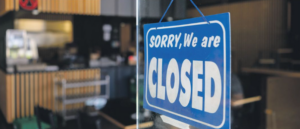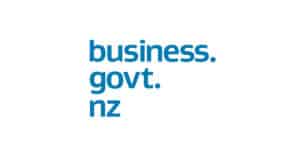Jason Paris
CEO of Vodafone New Zealand

What trends has he witnessed and what lessons can be learned?
In general terms, businesses have (thus far) survived and thrived when they:
Prioritised aggressively
This is the time to reset your prioritisation. Figure out exactly what is valuable to your business, and focus energy and investment here. When we start a business, the key goals are really well-defined. Then as time goes on, there is the daily distraction of debtors, operational matters, and employee issues. That “noise” can cloud what was a clear vision.
Acted early
Take the opportunity to bring forward decision-making. In the vast majority of cases, no-one regrets acting early. I think it is Jeff Bezos of Amazon who talks about business decisions being either one-way or two-way doors. Very few of them are truly one-way; you can nearly always come back. It is better to try a belief in the market than to keep kicking that can down the road. The worst thing is to sit on it, debate, and not to make the call.
At Vodafone, we put decision-making into either rapid or reinvention. Rapid are the decisions that would give us zero regrets if we made those changes today. Reinvention are those with a two to three times higher risk. We could place a bet on them, but they could transform our trajectory. COVID-19 gave an opportunity to act on the reinvention ones, and seriously consider what is really important, and could truly add value.
What has been most impressive has been the pivot to contactless click and collect – across all types of industry. Innovative thinking ensures that a business can safely provide its products or services, and keep its doors open, even when its doors are not physically open.
Maximised customer experience (CX)
Work hard to ensure client retention. Your existing customers are your strongest advocates – being able to recommend you to a friend over a cup of coffee is far more powerful than any paid-for ad placement – and potentially your most profitable marketing channel.
Avoid the too easy temptation of becoming addicted to customer acquisition. Customer behaviour and expectations have changed quickly. Possibly the best example of this is the NZ COVID tracer app.
Everybody of any age now knows how to take a photograph of a QR code. This was not the case six months ago; it might possibly never have been the case for some potential customers – but now we’ve got grandparents using House Party!
SMEs are stronger together, and you have to work out when to collaborate and when to compete.
Customers have become much more comfortable with a complete end-to-end digital experience. They no longer have to drive and pay for expensive parking to visit a business, when they can experience that online. This is a massive opportunity that every business needs to embrace. It expands your potential marketplace and keeps money coming through promptly (if people are paying with credit cards).
Customers are opting for low-risk, trustworthy brands with a long-term track record. They are looking for consistent quality of service and product, in that order. Except for very cost-conscious consumers, I personally don’t believe that product advantage exists much anymore. The true difference is the experience you provide for your customers.
And, if you can provide that great experience, it is an opportunity for data capture so that you can start to build enduring, ongoing relationships.
Vigorously adopted digital options

The likes of Webex, MS Teams, and Zoom have helped employees and employers feel connected and function cohesively.
Knew when to collaborate and when to compete
Look at your industry’s value chain more broadly. SMEs are stronger together, and you have to work out when to collaborate and when to compete. If smaller businesses can combine resources on areas where they do not have a competitive advantage or are not creating value, that is a great way to save costs and reduce risk.
Realising the tangible benefits of 5G
The first steps that businesses can take

The benefits of 4G and smartphones were arguably more for the consumer. Now, 5G and fibre bring real advantages and opportunities for business. On a purely practical basis, 5G is at least as secure and offers at least as much capacity and resilience as fibre. This means it can be a cost-effective back-up, ensuring business continuity. If the fibre goes down, you should not even notice. That is the first thing that any business should consider.
The other opportunities offered by 5G vary from the most basic (the ability to save energy) to the most extreme (remote brain surgery). There are already schools that have added smart sensors to their switches – at a cost of less than one dollar each – so that heating and lighting only come on when they are needed rather than at a prescribed daily time. Energy bills are being halved, and, of course, it is good for the environment.
Travel and logistics are the next things to consider. Vehicles will be able to “talk” to each other and to the transport networks, meaning that travel should be both safer and more efficient.
COVID-19Digital




